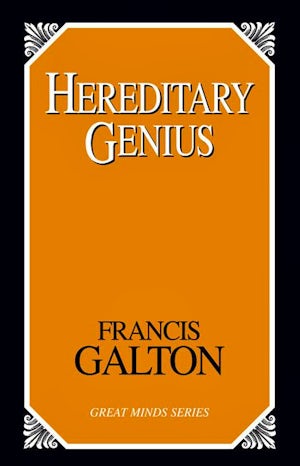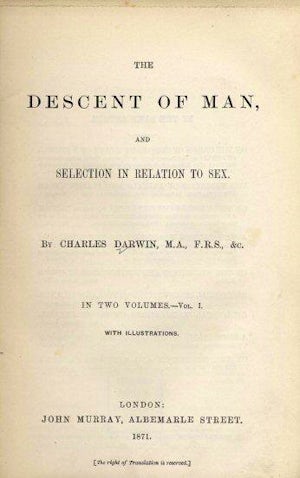
1924. F.G. Crookshank’s The Mongol in our Midst: a Study of Man and his Three Faces (1924), is the third volume published in the popular To-day and To-morrow series of books (see entry on this series on this website). In this racial anthropology-medical work, Dr. Crookshank (1873-1933) examines the many curious homologies (anatomical or physiological similarities) between members of the Mongol Race (true Orientals), the so-called Mongolian imbeciles (people with Down’s Syndrome or Trisomy 21 in today’s terminology), and those ‘normal people’ with ‘Mongoloid characters’ who form a ‘Mongoloid sub-type’ within the white population of Britain or elsewhere. It also suggests a special anthropological kinship between the gorilla and the Negro, the chimpanzee and Semites/Arabs, and the orangutan and Orientals. It is an important milestone in the ‘medicalization of eugenics’ and a not-quite ‘last hurrah’ of scientific racism, before its long retreat allied with the forces of mainline or hardline eugenics, racial anthropology and Nordicism. See the accompanying picture for excerpted reviews.
It is a remarkable departure from most of the series, for a number of reasons. First at 123 pages of text, plus author’s note and extended quotes by Dante and Sir Thomas Browne, it is the longest in the series, and almost unique in the inclusion of an additional 30 picture-plates. Crookshank is the only author in the series to provide an extended reference list (ten pages) at the end, referencing academic sources from anthropology, archeology, ethnology and medicine, including several entries for Sir Arthur Keith (later author in the series of Ethnos, or the Future of the Race, 1931), and Doctors J. and R.L. Langdon-Down (father and son) who first characterized ‘Mongolism’ as a congenital disorder. It is also notable for its 1931 expansion to a full-length book (550 pages) by the same publisher, as well as a German translation (1928) that later had dire consequences for ‘Mongoloid Imbeciles’ in the Nazi ‘T-4’ euthanasia campaign. But most odd of all, throughout this “brilliant piece of speculative induction” the focus is on man’s anthropological and racial origins in antiquity, and its implications for to-day, rather than a speculative forecast of the future (which Crookshank avoids). It should be noted that Crookshank maintains a rigorous scientific-medical detachment throughout; there is no eugenic evangelizing, or social-engineering proselytizing. In this, Mongol in our Midst is more reminiscent of H.F. Osborn’s Men of the old Stone Age (1915), in academic-scientific tone and anthropological focus, as opposed to Madison Grant’s more historical-based, racially-speculative Passing of the Great Race (1916), but carries the same Nordicist bias of both.
-Michael Kohlman
Anonymous (1924). Review of The Mongol in our Midst. Nature, 114(2869), 605.
Bowler, P.J. (2009). Science for all: the popularization of science in early twentieth-century Britain. Chicago: University of Chicago Press.
Brown, W.L. (1931). Review of The Mongol in our Midst (3rd Edition). Eugenics Review, 23(3), 251–253.
Crookshank, F.G. (1924). The mongol in our midst. London: Kegan Paul, Trench & Trubner.
Grant, M. (1916). The passing of the great race. New York: Charles Scribner’s Sons.
Gunther, H.F.K. (1927). The racial elements of European history. Translated from second German edition by G.C. Wheeler. London: Methuen & Co.
Hankins, F.H. (1924). Review of The Mongol in our Midst. Social Forces, 3(1), 184.
Keith, A. (1931). Ethnos; or the problem of race considered from an anthropological standpoint. London: Kegan Paul, Trench & Trubner.
Osborn, H.F. (1915). Men of the old stone age. New York: Charles Scribner and Sons.
Spiro, J.P. (2009). Defending the master race: Conservation, eugenics, and the legacy of Madison Grant. Burlington, Vermont: University of Vermont Press.
 1869:
Galton publishes Hereditary Genius
1869:
Galton publishes Hereditary Genius
 1871:
Charles Darwin publishes The Descent of Man
1871:
Charles Darwin publishes The Descent of Man